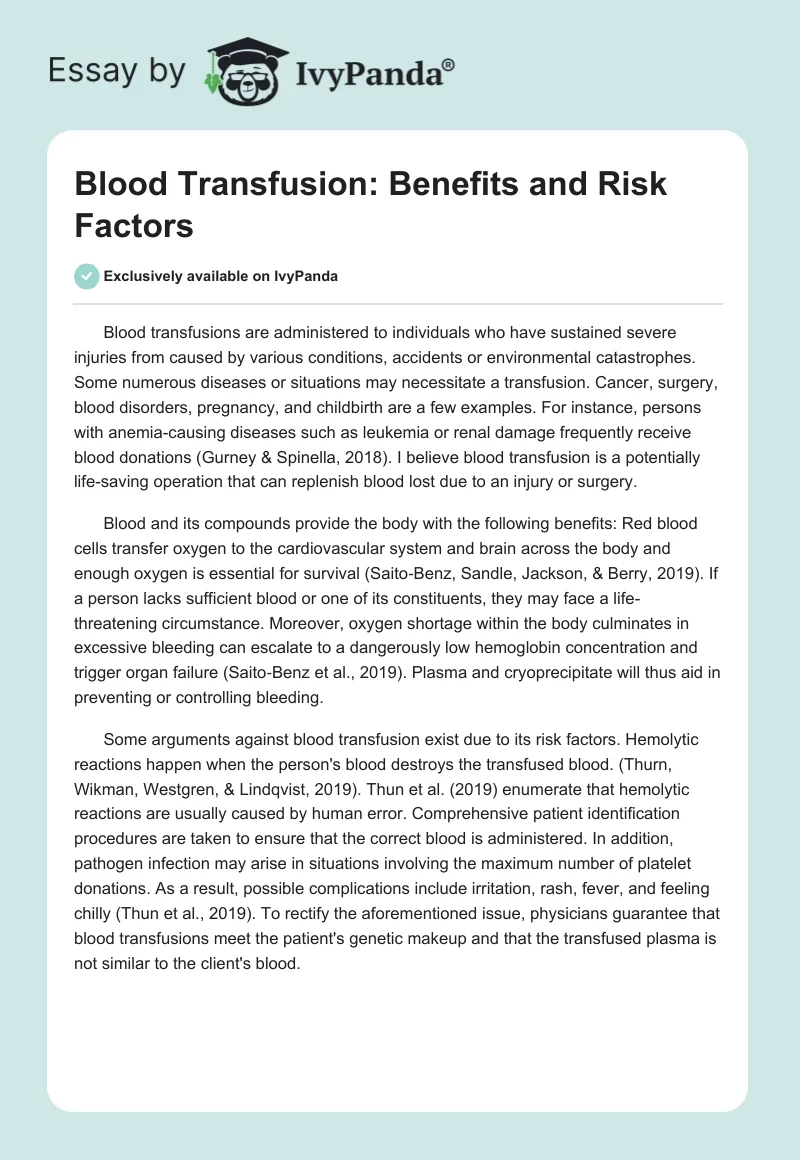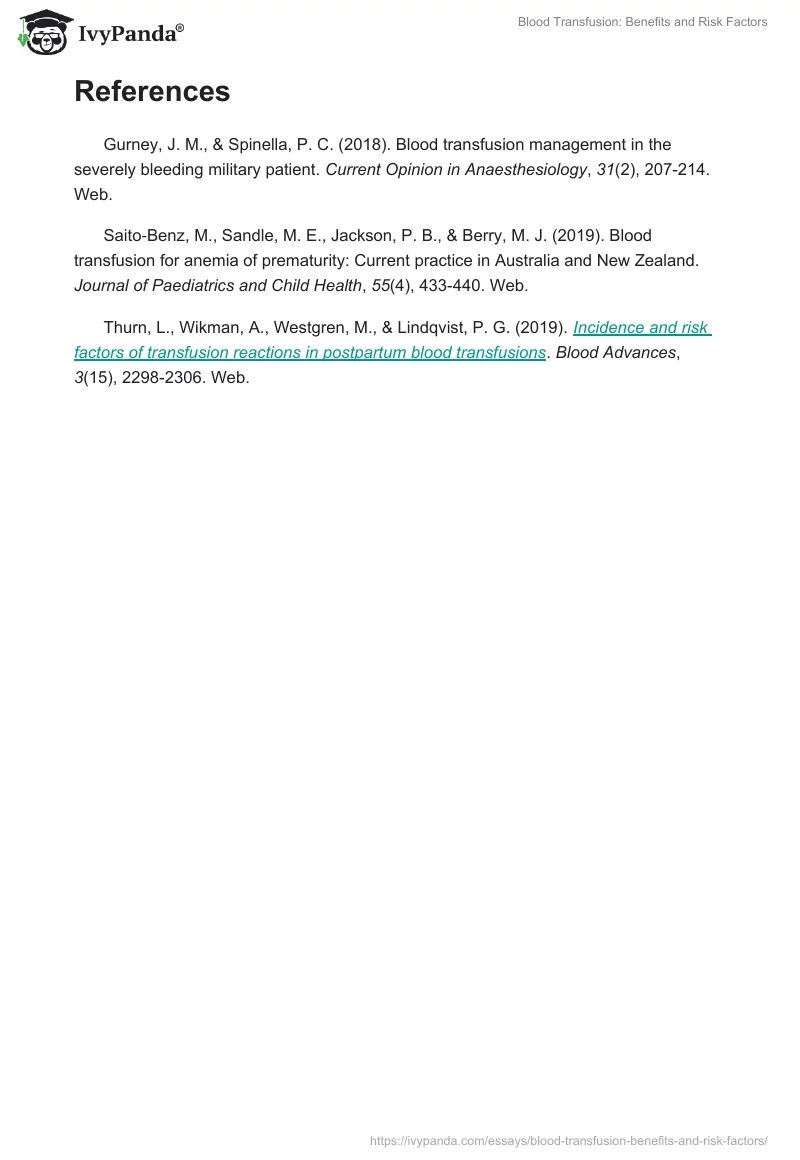Blood transfusions are administered to individuals who have sustained severe injuries from caused by various conditions, accidents or environmental catastrophes. Some numerous diseases or situations may necessitate a transfusion. Cancer, surgery, blood disorders, pregnancy, and childbirth are a few examples. For instance, persons with anemia-causing diseases such as leukemia or renal damage frequently receive blood donations (Gurney & Spinella, 2018). I believe blood transfusion is a potentially life-saving operation that can replenish blood lost due to an injury or surgery.
Blood and its compounds provide the body with the following benefits: Red blood cells transfer oxygen to the cardiovascular system and brain across the body and enough oxygen is essential for survival (Saito‐Benz, Sandle, Jackson, & Berry, 2019). If a person lacks sufficient blood or one of its constituents, they may face a life-threatening circumstance. Moreover, oxygen shortage within the body culminates in excessive bleeding can escalate to a dangerously low hemoglobin concentration and trigger organ failure (Saito‐Benz et al., 2019). Plasma and cryoprecipitate will thus aid in preventing or controlling bleeding.
Some arguments against blood transfusion exist due to its risk factors. Hemolytic reactions happen when the person’s blood destroys the transfused blood. (Thurn, Wikman, Westgren, & Lindqvist, 2019). Thun et al. (2019) enumerate that hemolytic reactions are usually caused by human error. Comprehensive patient identification procedures are taken to ensure that the correct blood is administered. In addition, pathogen infection may arise in situations involving the maximum number of platelet donations. As a result, possible complications include irritation, rash, fever, and feeling chilly (Thun et al., 2019). To rectify the aforementioned issue, physicians guarantee that blood transfusions meet the patient’s genetic makeup and that the transfused plasma is not similar to the client’s blood.
References
Gurney, J. M., & Spinella, P. C. (2018). Blood transfusion management in the severely bleeding military patient. Current Opinion in Anaesthesiology, 31(2), 207-214. Web.
Saito‐Benz, M., Sandle, M. E., Jackson, P. B., & Berry, M. J. (2019). Blood transfusion for anemia of prematurity: Current practice in Australia and New Zealand. Journal of Paediatrics and Child Health, 55(4), 433-440. Web.
Thurn, L., Wikman, A., Westgren, M., & Lindqvist, P. G. (2019). Incidence and risk factors of transfusion reactions in postpartum blood transfusions. Blood Advances, 3(15), 2298-2306. Web.


